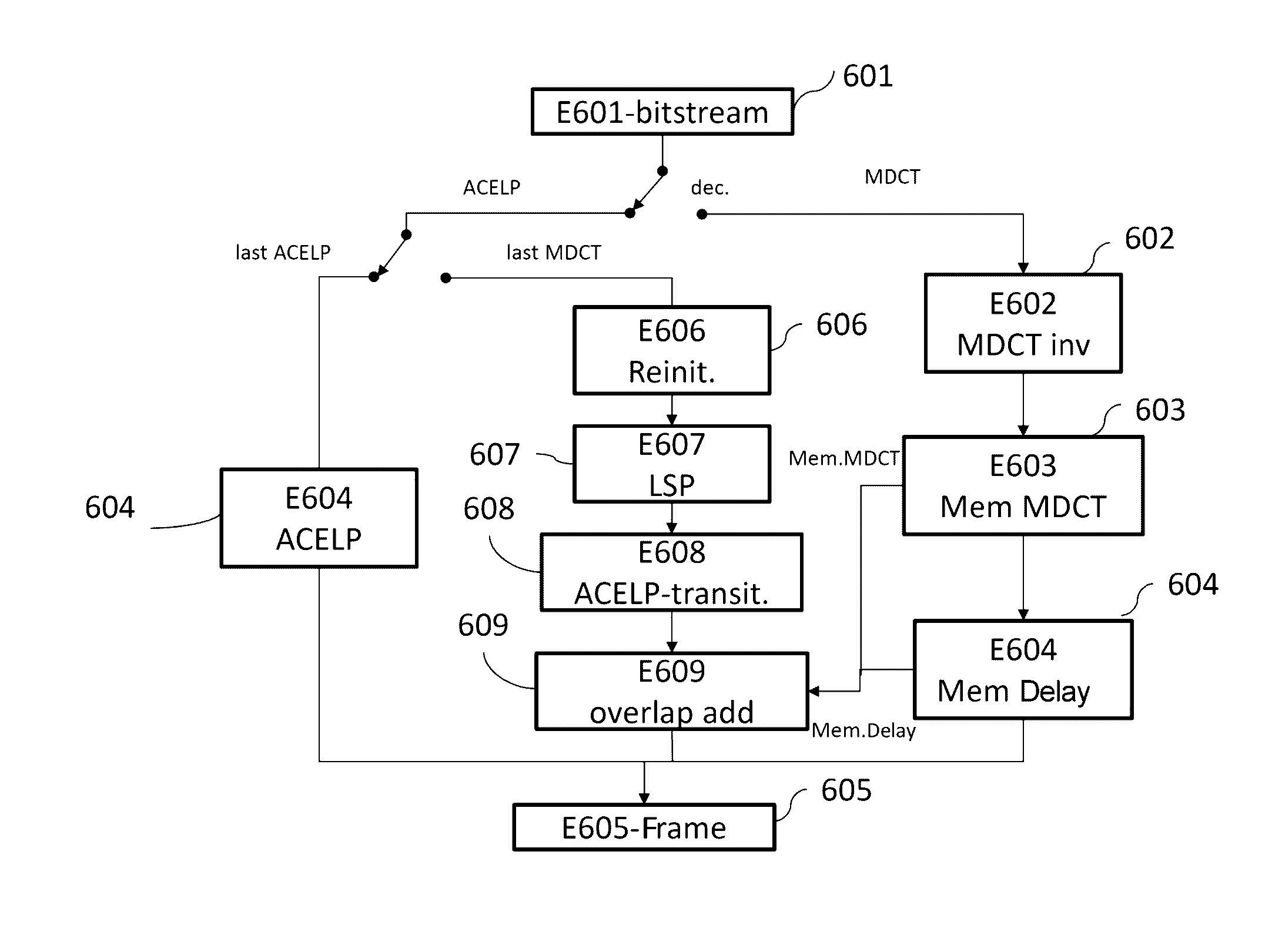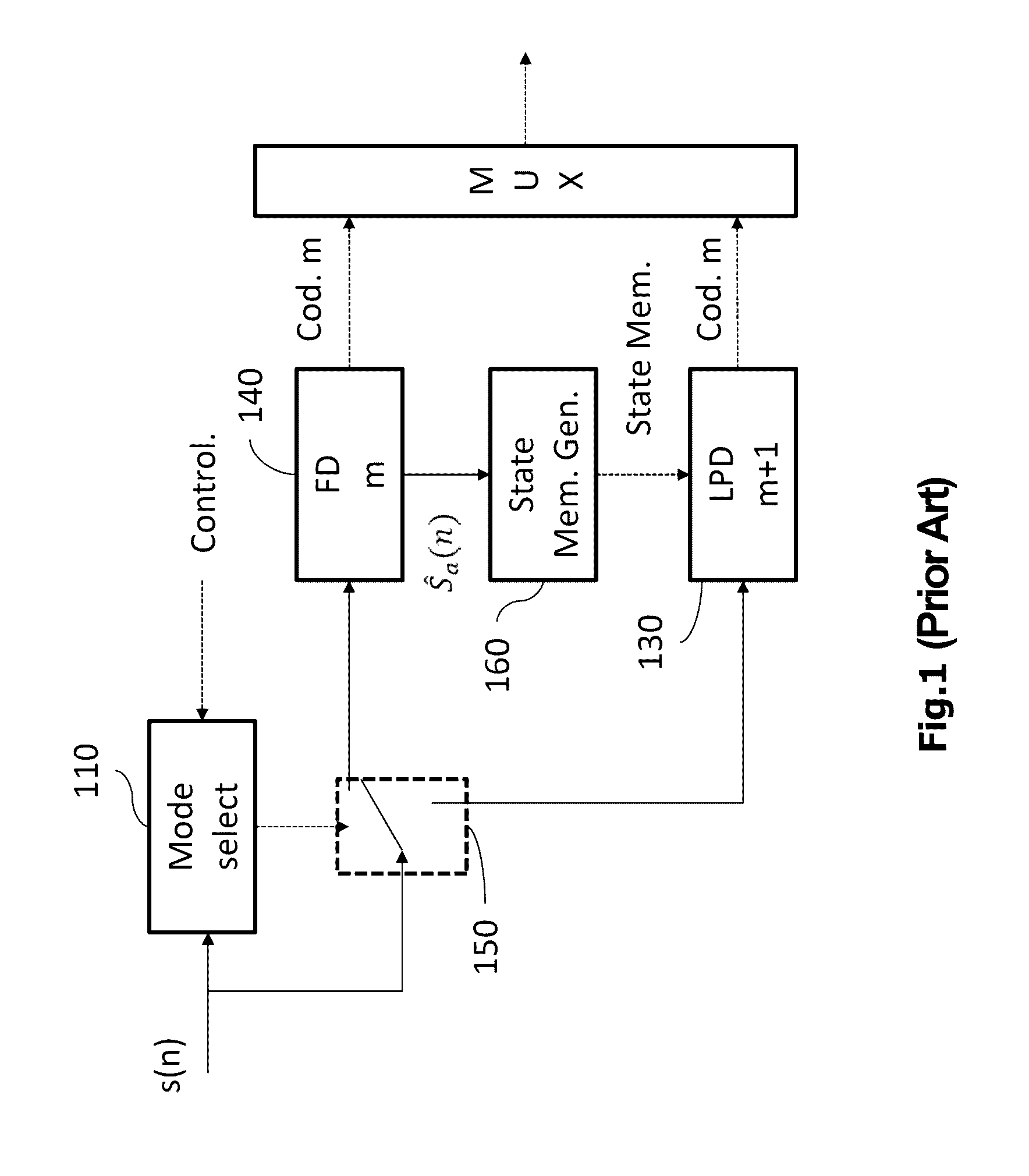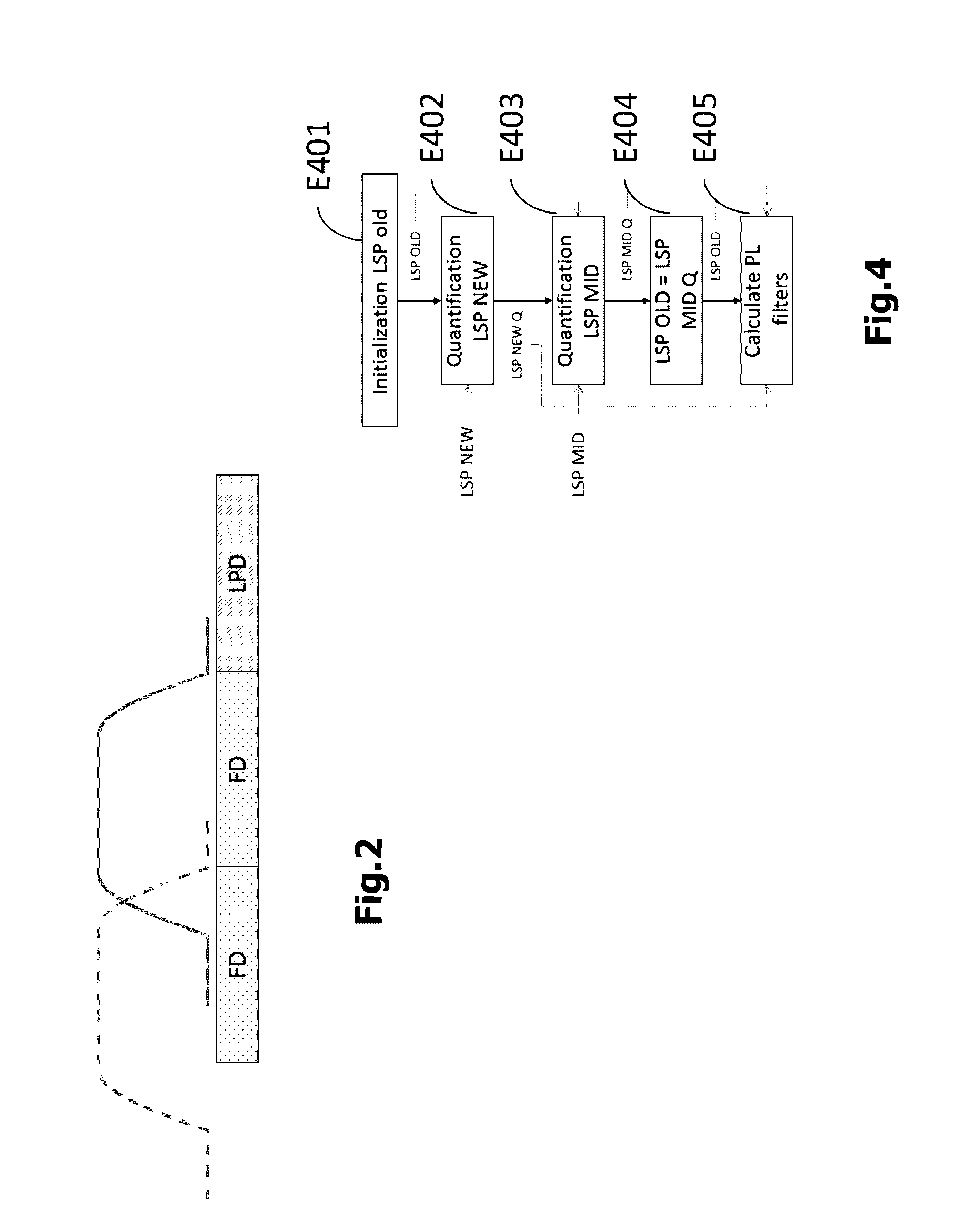Transition from a transform coding/decoding to a predictive coding/decoding
a transform coding/decoding and predictive technology, applied in the field of digital signal coding, can solve the problems of multi-mode coding complexity spike, main difficulty in transition between lpd to fd modes and vice versa, etc., and achieve the effect of simplifying the implementation of the transition and reducing the complexity of the decoder
- Summary
- Abstract
- Description
- Claims
- Application Information
AI Technical Summary
Benefits of technology
Problems solved by technology
Method used
Image
Examples
Embodiment Construction
[0107]FIG. 2 illustrates in a schematic manner, the principle of coding during a transition between a transform coding and a predictive coding according to the invention. Considered here is a succession of audio frame to be coded either with a transform coder (FD) for example of MDCT type or with a predictive coder (LPD) for example of ACELP type; it will be noted that additional coding modes are possible without affecting the invention. In this example the transform coder (FD) uses windows with small delay of “Tukey” type (the invention is independent of the type of window used) and whose total length is equal to two frames (zero values inclusive) as represented in the figure.
[0108]During coding, the windows of the FD coder are synchronized in such a way that the last non-zero part of the window (on the right) corresponds with the end of a new frame of the input signal. Note that the splitting into frames illustrated in FIG. 2 includes the “lookahead” (or future signal) and the fra...
PUM
 Login to View More
Login to View More Abstract
Description
Claims
Application Information
 Login to View More
Login to View More - R&D
- Intellectual Property
- Life Sciences
- Materials
- Tech Scout
- Unparalleled Data Quality
- Higher Quality Content
- 60% Fewer Hallucinations
Browse by: Latest US Patents, China's latest patents, Technical Efficacy Thesaurus, Application Domain, Technology Topic, Popular Technical Reports.
© 2025 PatSnap. All rights reserved.Legal|Privacy policy|Modern Slavery Act Transparency Statement|Sitemap|About US| Contact US: help@patsnap.com



